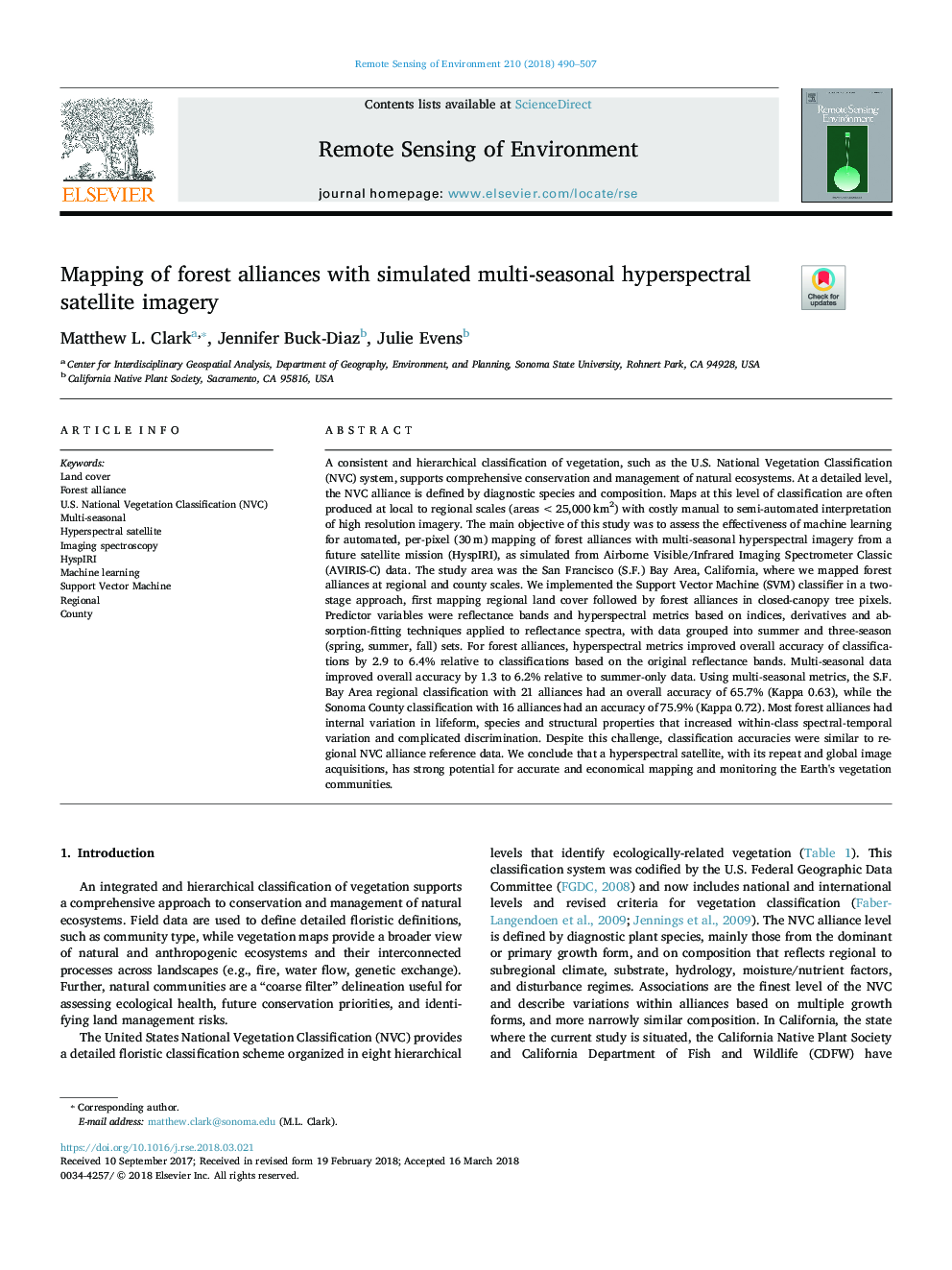| Article ID | Journal | Published Year | Pages | File Type |
|---|---|---|---|---|
| 8866616 | Remote Sensing of Environment | 2018 | 18 Pages |
Abstract
A consistent and hierarchical classification of vegetation, such as the U.S. National Vegetation Classification (NVC) system, supports comprehensive conservation and management of natural ecosystems. At a detailed level, the NVC alliance is defined by diagnostic species and composition. Maps at this level of classification are often produced at local to regional scales (areas <25,000â¯km2) with costly manual to semi-automated interpretation of high resolution imagery. The main objective of this study was to assess the effectiveness of machine learning for automated, per-pixel (30â¯m) mapping of forest alliances with multi-seasonal hyperspectral imagery from a future satellite mission (HyspIRI), as simulated from Airborne Visible/Infrared Imaging Spectrometer Classic (AVIRIS-C) data. The study area was the San Francisco (S.F.) Bay Area, California, where we mapped forest alliances at regional and county scales. We implemented the Support Vector Machine (SVM) classifier in a two-stage approach, first mapping regional land cover followed by forest alliances in closed-canopy tree pixels. Predictor variables were reflectance bands and hyperspectral metrics based on indices, derivatives and absorption-fitting techniques applied to reflectance spectra, with data grouped into summer and three-season (spring, summer, fall) sets. For forest alliances, hyperspectral metrics improved overall accuracy of classifications by 2.9 to 6.4% relative to classifications based on the original reflectance bands. Multi-seasonal data improved overall accuracy by 1.3 to 6.2% relative to summer-only data. Using multi-seasonal metrics, the S.F. Bay Area regional classification with 21 alliances had an overall accuracy of 65.7% (Kappa 0.63), while the Sonoma County classification with 16 alliances had an accuracy of 75.9% (Kappa 0.72). Most forest alliances had internal variation in lifeform, species and structural properties that increased within-class spectral-temporal variation and complicated discrimination. Despite this challenge, classification accuracies were similar to regional NVC alliance reference data. We conclude that a hyperspectral satellite, with its repeat and global image acquisitions, has strong potential for accurate and economical mapping and monitoring the Earth's vegetation communities.
Keywords
Related Topics
Physical Sciences and Engineering
Earth and Planetary Sciences
Computers in Earth Sciences
Authors
Matthew L. Clark, Jennifer Buck-Diaz, Julie Evens,
